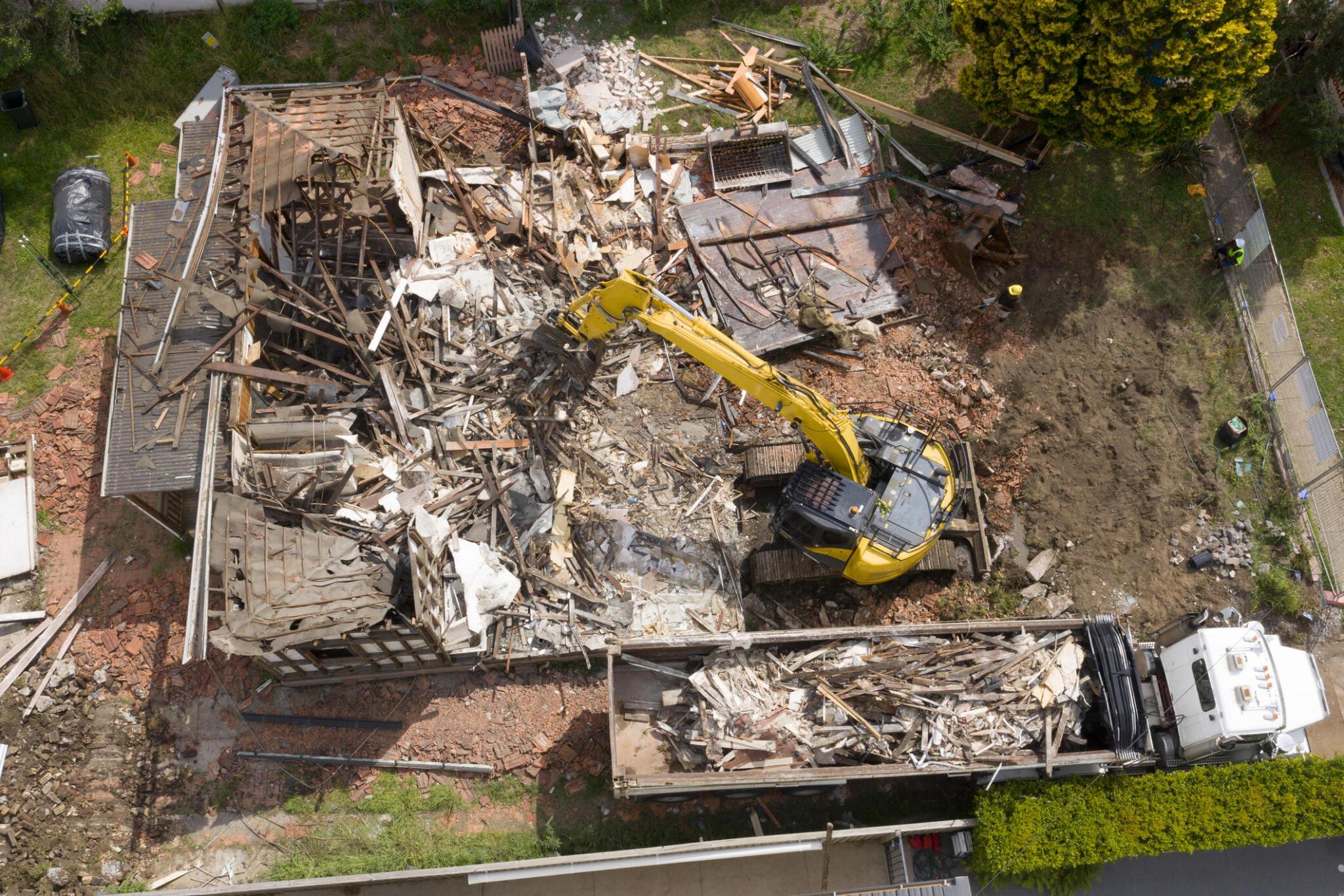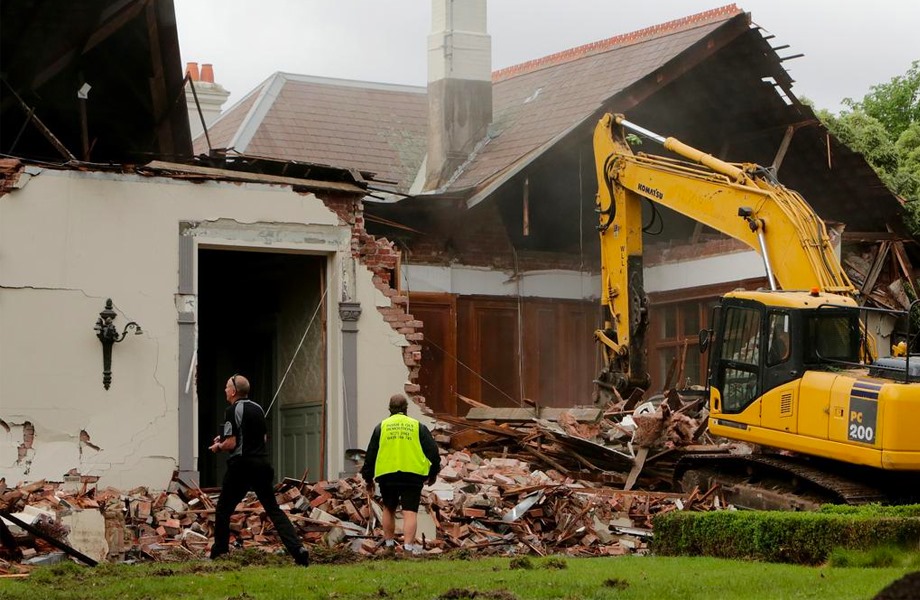RESIDENTIAL DEMOLITION WORKS
Residential structural demolition works in New South Wales (NSW) involve the careful dismantling or destruction of residential buildings, homes, or structures. These demolition activities may be necessary for various reasons, including urban redevelopment, infrastructure projects, safety concerns, or property renovation. In NSW, like in many other regions, residential demolition works are governed by specific regulations and guidelines aimed at ensuring safety, minimizing environmental impact, and managing the disposal of demolition waste responsibly.
1. Assessment and Evaluation:
Residential structural demolition works in NSW are subject to regulatory oversight to ensure compliance with safety and environmental standards. The key regulatory bodies involved include:
SafeWork NSW: Responsible for regulating work health and safety, including demolition activities, to prevent workplace injuries and fatalities.
Local Councils: Responsible for granting permits and approvals for demolition works within their jurisdictions. They also enforce compliance with local planning regulations and development controls.


Environmental Protection Authority (EPA): Oversees environmental regulations related to demolition activities, including waste management and contamination mitigation.
Heritage Council of NSW: Provides guidance on preserving heritage-listed buildings and structures during demolition works.
2. Pre-Demolition Planning:
Before commencing any demolition work, thorough planning is essential to ensure safety and regulatory compliance. This may include:
Site Assessment: Evaluation of the building's condition, structural integrity, and any potential hazards such as asbestos or hazardous materials.
Development Approval: Obtaining necessary permits and approvals from the local council, including planning permission and environmental assessments.
Asbestos Survey: Identification and management of asbestos-containing materials (ACMs) in accordance with regulations set by SafeWork NSW and the EPA.
Services Disconnection: Arranging for the disconnection of water, gas, electricity, and telecommunications services to the property.
Neighbour Notification: Informing adjacent property owners and occupants about the demolition works to mitigate any potential disruptions or safety concerns.
3. Demolition Methods:
Several methods may be employed for residential structural demolition, depending on factors such as the building's size, construction materials, and site constraints. Common demolition techniques include:
Mechanical Demolition: Utilizing heavy machinery such as excavators, bulldozers, and cranes equipped with demolition attachments to dismantle the structure piece by piece.
Manual Demolition: Hand demolition of smaller structures or delicate components where precision is required to minimize collateral damage.
Deconstruction: ystematic dismantling of the building to salvage reusable materials such as timber, bricks, and fixtures for recycling or resale.
4. Safety Measures:
Safety is paramount in residential demolition works to protect workers, bystanders, and adjacent properties. Safety measures may include:
Safe Work Method Statements (SWMS): SWMS allow for an proper identification of hazards and controls employed to reduce the risks to be understood by all workplace personnel.
AS2601 Demolition Workplans: Development of a comprehensive plan outlining site specific issues, work stages, work processes, emergency protocols, and protective measures (to be prepared in accordance with consent requirements, legislative requirements and best practices under Australian Standard 2601 – The Demolition of Structures)
Personal Protective Equipment (PPE): Mandatory use of appropriate PPE such as hard hats, safety goggles, gloves, and respiratory protection to minimize the risk of injury or exposure to hazardous materials.
Site Fencing and Signage: Erecting barricades, fencing, and warning signs around the demolition site to restrict access and alert the public to potential dangers.
Dust Suppression: mplementation of measures to control dust generation during demolition, including water spraying, dust barriers, and containment systems, especially when dealing with materials like asbestos.
Structural Stability Monitoring: Regular inspection and monitoring of the building's stability during demolition to detect any unexpected shifts or structural weaknesses.
5. Waste Management and Recycling:
Demolition activities generate a significant amount of waste, including concrete, timber, metals, and other construction materials. To minimize environmental impact and promote sustainability, waste management strategies may involve:
Sorting and Separation: Segregation of demolition debris into different categories for recycling, reuse, or disposal at licensed facilities.
Material Salvage: Identification and salvage of reusable or recyclable materials such as bricks, timber, metals, and fixtures for resale or repurposing.
Waste Disposal: Proper disposal of non-recyclable and hazardous waste in accordance with EPA regulations, including transportation to licensed landfill sites or treatment facilities.
6. Post-Demolition Management:
Once demolition works are completed, proper measures are needed to ensure safe and suitable handover to clients, who will generally be using the land for a new build. This may involve:
Site Clearing: Clearing debris and restoring the site to a safe condition, including soil remediation if hidden contamination is identified (noting that these works may need to be done as an extra to the identified scope).
Final Inspections: Conducting final inspections to verify compliance with consent conditions and regulations before handover.
Documentation and Reporting: Maintaining detailed records of demolition activities, including waste disposal manifests, asbestos removal clearance certificates, and final inspection reports for compliance and/or future reference.
In summary, residential structural demolition works in NSW involve a complex process guided by regulatory requirements, safety considerations, environmental concerns, and community engagement.
At Bayview Demolition, we always adhere to best practices, employing appropriate demolition planning and performance methods, and implementing effective waste management and safety measures, to ensure that demolition projects are carried out safely, responsibly, and in compliance with relevant legislation and regulatory requirements.
Should you wish to discuss any residential demolition job (whether large or small) with one of our friendly staff, please complete the contact us section of our webpage, call us on 0419 969799 or email us at [email protected].

